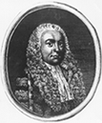1.8e: Exercises - Variation
( \newcommand{\kernel}{\mathrm{null}\,}\)
A: Translate Words into a Formula
Exercise
1. The distance
2. The extension of a hanging spring
3. An automobile’s braking distance
4. The volume
5. The volume
6. Every particle of matter in the universe attracts every other particle with a force
7. Simple interest
8. The time
- Answers to odd exercises:
-
1. 3. 5. 7.
B: Translate Words and Find a Formula
Exercise
9.
10.
11.
12.
13.
14.
15.
16.
17.
18.
19.
20.
21.
22.
23.
24.
25.
26.
27.
28.
- Answers to odd exercises:
-
9.
11.
13.
15.
17.
19.
21.
23.
25.
27.
C: Direct variation problems
Exercise
29. Revenue in dollars is directly proportional to the number of branded sweatshirts sold. The revenue earned from selling
30. The sales tax on the purchase of a new car varies directly as the price of the car. If an
31. The price of a share of common stock in a company is directly proportional to the earnings per share (EPS) of the previous
32. The distance traveled on a road trip varies directly with the time spent on the road. If a
33. The circumference of a circle is directly proportional to its radius. The circumference of a circle with radius
34. The area of circle varies directly as the square of its radius. The area of a circle with radius
35. The surface area of a sphere varies directly as the square of its radius. When the radius of a sphere measures
36. The volume of a sphere varies directly as the cube of its radius. When the radius of a sphere measures
37. With a fixed height, the volume of a cone is directly proportional to the square of the radius at the base. When the radius at the base measures
38. The distance
Robert Hooke (1635-1703)  |
39. A hanging spring is stretched
40. A hanging spring is stretched
41. If a hanging spring is stretched
42. If a hanging spring is stretched
43. It takes
44. After an accident, it was determined that it took a driver
45. The period
46. The time
- Answers to odd exercises:
-
29.
31.
33.
35.
37.
39.
41.
43.
45.
D: Inverse Variation Problems
Exercise
47. To balance a seesaw, the distance from the fulcrum that a person must sit is inversely proportional to his weight. If a
48. The current
49. The amount of illumination
50. The amount of illumination
|
|
Robert Boyle (1627-1691)  |
51. A balloon is filled to a volume of
52. A balloon is filled to
- Answers to odd exercises:
-
47. 49. 51.
E: Joint and Combined Variation
Exercise
53. The number of men, represented by
54. The volume of a right circular cylinder varies jointly as the square of its radius and its height. A right circular cylinder with a
Sir Isaac Newton (1643-1727)  |
55. If two objects with masses
56. Use the gravitational constant from the previous exercise to write a formula that approximates the force
57. Calculate the force in newtons between Earth and the Moon, given that the mass of the Moon is approximately
58. Calculate the force in newtons between Earth and the Sun, given that the mass of the Sun is approximately
59. If
60. If
61. If
- Answers to odd exercises:
-
53.
55.
57.
59.
61.
F: More Variation Problems
Exercise
71. The number of calories, c, burned varies directly with the amount of time, t, spent exercising. Arnold burned 312 calories in 65 minutes exercising. How many calories would he burn if he exercises for 90 minutes?
72. The number of gallons of gas a car uses varies directly with the number of miles driven. Driving 469.8 miles used 14.5 gallons of gas. How many gallons of gas would the car use if driven 1000 miles?
73. The weight of a liquid varies directly as its volume. A liquid that weighs 24 pounds has a volume of 4 gallons. If a liquid has volume 13 gallons, what is its weight?
74. The maximum load a beam will support varies directly with the square of the diagonal of the beam’s cross-section. A beam with diagonal 4” will support a maximum load of 75 pounds. What is the maximum load that can be supported by a beam with diagonal 8”?
75. The area of a circle varies directly as the square of the radius. A circular pizza with a radius of 6 inches has an area of 113.1 square inches. What is the area of a pizza with a radius of 9 inches?
76. The fuel consumption (mpg) of a car varies inversely with its weight. A car that weighs 3100 pounds gets 26 mpg on the highway. What would be the fuel consumption of a car that weighs 4030 pounds?
77. A car’s value varies inversely with its age. If a two-year-old car is worth $20,000, what will be the value of the car when it is 5 years old?
78. The number of hours it takes for ice to melt varies inversely with the air temperature. Suppose a block of ice melts in 2 hours when the temperature is 65 degrees. How many hours would it take for the same block of ice to melt if the temperature was 78 degrees?
79. The force needed to break a board varies inversely with its length. Richard uses 24 pounds of pressure to break a 2-foot long board. How many pounds of pressure is needed to break a 5-foot long board?
80. For people with roughly the same build, the weight of the person varies as the cube of their height. If a person 65 inches high weighs 125 pounds, how much would a person 75 inches high with a similar build be expected to weigh?
81. The fuel consumption (mpg) of a car varies inversely with its weight. A Ford Focus weighs 3000 pounds and gets 28.7 mpg on the highway. What would the fuel consumption be for a Ford Expedition that weighs 5,500 pounds? Round to the nearest tenth.
82. A person's BMI (body mass index) varies directly as their weight and inversely as the square of their height. Given a person who weighs 180 pounds and is 60 inches tall has a BMI of 35.2, what is the BMI for someone who is 150 pounds and 68 inches tall?
83. The maximum load
84. The heat loss per hour through a glass window varies directly with the difference in temperature between the inside and outside temperatures and inversely as the thickness of the glass. A 0.3 cm thick window loses 2.4 BTU per hour when the outside temperature is 50 degrees Fahrenheit and the inside temperature is 70 degrees Fahrenheit. What will the heat loss be for a 1.5 cm thick window when the outside temperature is 30 degrees Fahrenheit and the inside temperature is 70 degrees Fahrenheit?
85. The heat loss of a glass window varies jointly as the window's area and the difference between the outside and inside temperatures. A window 3 feet wide by 6 feet long loses 1200 Btu per hour when the temperature outside is 20 degrees colder than the temperature inside. Find the heat loss through a glass window that is 6 feet wide by 9 feet long when the temperature outside is 10 degrees colder that the temperature inside.
86. Sound intensity varies inversely as the square root of the distance from the sound source. If you are in a movie theater and you change your seat to one that is twice as far from the speakers, how does the new sound intensity compare to that of your original seat?
87. The number of hours
88. The amount of time t needed to build a wall varies directly as the number of bricks b need and inversely as the number of workers w. If it takes 18 hours for six workers to make a wall composed of 2400 bricks, how long would it take to build a wall of 4500 bricks with 10 workers?
- Answers to odd exercises:
-
71. 432 calories 73. 78 pounds 75. 254.5 square inches 77. $8,000 79. 9.6 pounds 81. 15.6 mpg 83. 144 tons 85. 1800 BTU per hour 87. 6 people

